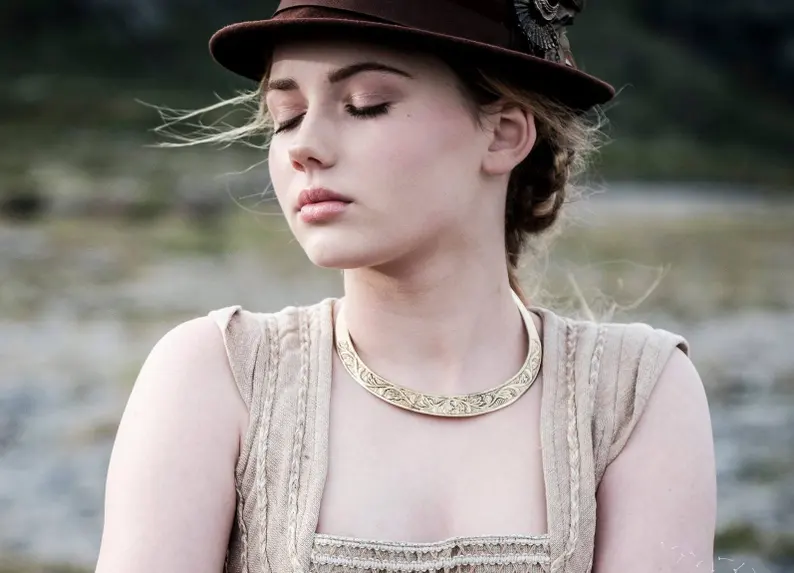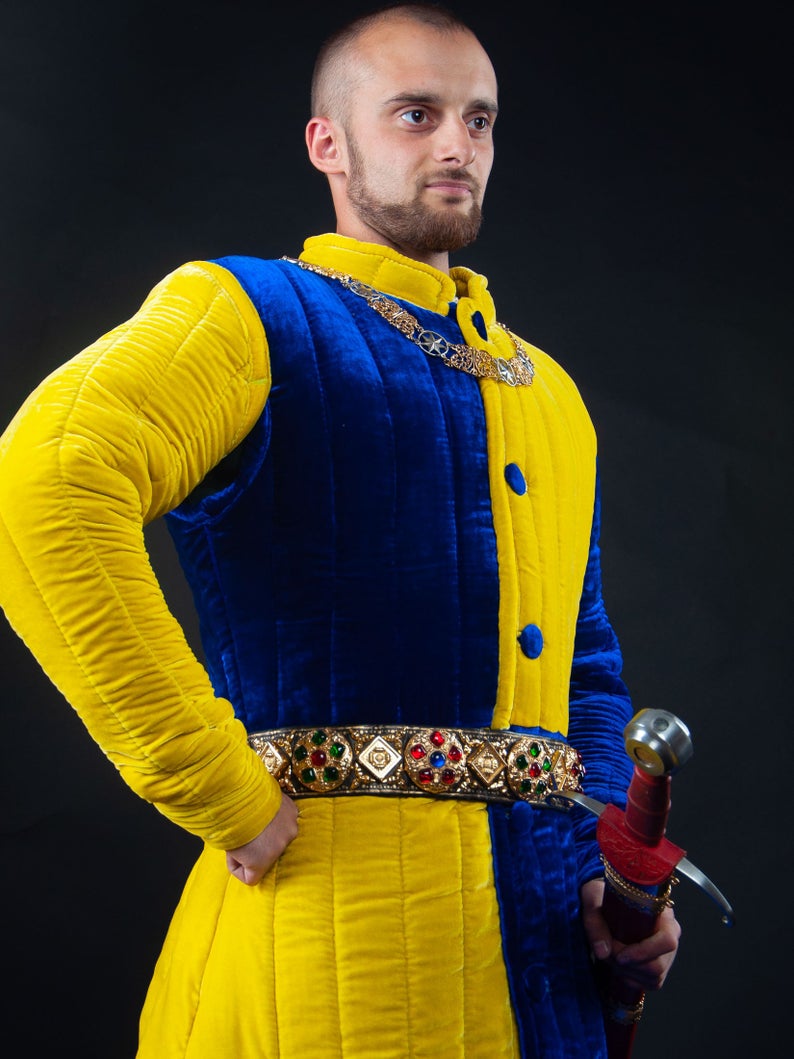
Table of Contents
While some prefer modern and contemporary designs, medieval jewelry pieces are among the most beautiful and unique in the world, reflecting the significant history of the past. With unique motifs and designs, jewelry from this era continues to inspire present day styles. Let’s take a look at Medieval jewelry and how to wear these today.
What was the Medieval Period?

Known also as the Middle Ages or Dark Ages, the Medieval era began with the fall of the Roman Empire and extended until the beginning of the Renaissance. This period stretched for a thousand years, and was viewed as the period between antiquity and the modern world
Most pieces of fine jewelry became limited to royalty, aristocracy, nobility, and clergy at the beginning of the medieval period. Jewelry became an indicator of rank, wealth and status, and ones were condemned for wearing ornaments that were not proper to their status. In fact, sumptuary laws were established for the importance of jewels as symbols of rank.
While jewelry made from gold and precious stones were worn by the upper classes from knightly degree and above, commoners wore jewelry made from copper and base metals—similar to modern “fast fashion” costume jewelry. Even wealthy people who afford to wear gold jewelry and precious gems were banned from wearing them.
Brooches, bracelets and rings also served as a sort of currency or collateral. Though the economic value of gemstones changed over time, the bigger the stone the greater was its value. As styles changed and pieces switched hands, jewelry designs were altered to reflect the current fashion and tastes of the new owner. Also, medieval rings were worn with a purpose of signifying rank, and some were believed to have protective powers and magical inscriptions.
Characteristics of Medieval Jewelry
While the types and styles of Medieval jewelry were wide ranging, there were common characteristics that united these pieces.
- Gold and silver were the metals commonly used in making medieval jewelry.

Goldsmiths worked with gold as the most precious metal in jewelry, while silver became a metal alternative for lower classes. In fact, most gold used in jewelry production was recycled from ancient coins and other gold pieces.
- Almost all jewelry of the period was set with cabochon stones.

In the late 14th century, precious stones were usually polished in a convex shape rather than faceted. These were called cabochon stones. Diamonds were less commonly used in the early Middle Ages, but emeralds, sapphires, rubies, turquoises, pearls, corals, freshwater pearls, and amber were common. As gemstone cutting technology evolved, faceted, cut stones became more available.
- Medieval jewelry followed the artistic and architectural style of Gothic.

At the beginning of the 13th century, the openwork patterns of gothic cathedrals and castles was used as inspiration for medieval jewelry. Jewelers began working with angled designs rather rounded forms, while incorporating more elegant proportions and beautiful metalwork into their style. In the late “Middle Ages”, it was believed that painters supplied goldsmiths with designs for jewelry, which explains the elaborate and architectural styles often seen in Medieval jewelry.
- Enameling, soldering, and casting were the methods used in making jewelry.

Goldsmiths added color to jewelry designs by using enamel in their designs. In the 13th century, jewelers still used enameling, but a translucent enamel was preferred to create transparent pictures. The real beauty of medieval jewelry relied in the contrast of gold with textures and colors of enamel and gemstones. Filigree enameling was also used to create colorful designs separated with twisted wires and soldered into the base. Once the metal hardened, it was usually embellished with jewels and adorned with filigree to create jewelry.
- The importance of religion could be seen in medieval jewelry.

In the medieval times, Christian iconography flourished in jewelry design from crosses to biblical figures portrayed with enamel. Nuns of the period were given plain gold rings in token to their dedication to Church. With the onset of Christianity, figures from pagan mythology were forbidden, though some people still wore cameos depicting mythological figures.
In addition, gemstones were believed to have mystical powers. Much of the symbolism of gemstones during the period was based on the biblical description of the heavenly city of Jerusalem, as written in the Book of Revelation. Most people put faith in their stones, and engraved Christian symbolism and other figurative images into them. Dresses decorated with gems and enamel became popular, and medieval paintings portraying religious motifs were incorporated in robes.
Types of Medieval Jewelry
We’ve looked at the characteristics of Medieval jewelry but what types of jewelry did the people of this era wear?
1. Medieval Necklaces


Medieval necklaces began as strips of fabric or ribbon that were embellished with precious stones, but soon developed into metal chains and pendants. Strings made up of pearls or beads of rock crystal were universally worn. In 800 CE, the Vikings showed preference for silver jewelry, designed with geometric patterns, nature-inspired motifs, and animal silhouettes. Neck rings made from twisted silver wires became popular in the 9th century too and were known as torc necklaces.
In the 14th century, pendants containing relics were worn as a form of devotion, sentiment, or superstition. Longer necklaces with crosses, crucifixes, intaglios with sophisticated design, and cameos of Christ’s face became popular. Some pendants were also decorated with translucent enamel featuring religious imagery. Devotional jewelry like rosaries were brought to Western Christendom, and worn as necklaces.
2. Medieval Brooches

During the medieval times, brooches were more functional than decorative since they were intended for fastening belts, styling hats, and pinning on cloaks. Some brooches that were used to decorate hats conveyed messages about their wearer featuring initials, coats of arms, mythological themes, and even short mottos in their designs.
However, they soon became more extravagant with jewels—and nature-inspired designs, geometric shapes and crosses were incorporated into them. Brooches served as a symbol of rank and wealth, and they were popular during Viking and Carolingian periods. Some medieval brooches were influenced by Christianity and Byzantine Empire, featuring religious motifs and depictions of the afterlife.
3. Metal Belts and Girdles

Medieval belts were often made of silk or leather decorated with gold, silver, and jewels. A woman’s girdle was the perfect finishing accessory to a formal outfit since it was decorated with gemstones. During the 14th century, leather belts and girdles were replaced by metal belts embellished with jewels.
4. Coronets

Smaller and less elaborate than a formal crown, coronets was worn by members of aristocracy and nobility to signify their rank. Most were made of gold and silver, and designed with precious stones. Just like a crown, it is a circular head ornament, but it doesn’t have convex arches.
5. Medieval Rings

Rings of the Middle Ages were worn with purpose and often not purely for decorative reasons. While ecclesiastical rings served as sacred emblems, curative rings were meant to cure diseases. There existed also devotional rings and signet rings, which were used as an identification of wearer for verification purposes.
In fact, lawyers with a title of “Sergeants of the Law” had special rings engraved with Latin devices. These rings were used as seals when stamping documents to authenticate them. There were also hollow rings with an opening bezel, which served as containers for poison or holy relics.
Medieval Jewelry Today
Wearing Medieval jewelry today is often done to make a statement or to show off a quirky style. However, there are still beautiful and fairly stylish Medieval inspired jewelry designs that can be worn today.
Finding genuine Medieval jewelry can be difficult, because many of the jewelry pieces of that time were recast and recycled into newer pieces. If you’re looking for a unique piece of jewelry, then it’s best to opt for a Medieval inspired design.
Etsy and Amazon are two excellent platforms where you can find a range of unique Medieval jewelry styles. Always check the after sales policies and ensure that the retailer is trustworthy with a proven track record and excellent customer reviews and services.
Ready to browse Medieval jewelry? Click here to start your search.









